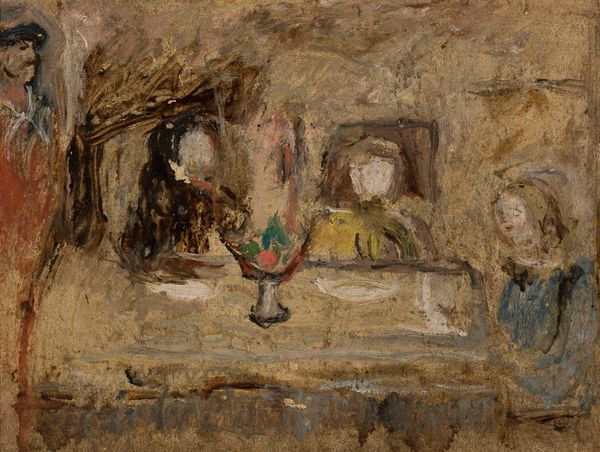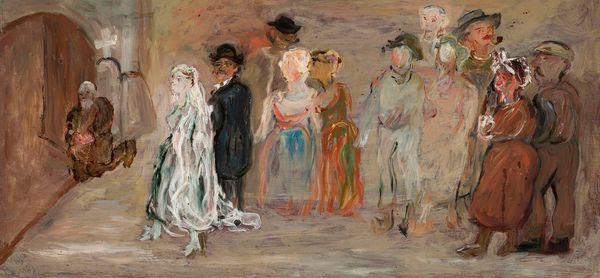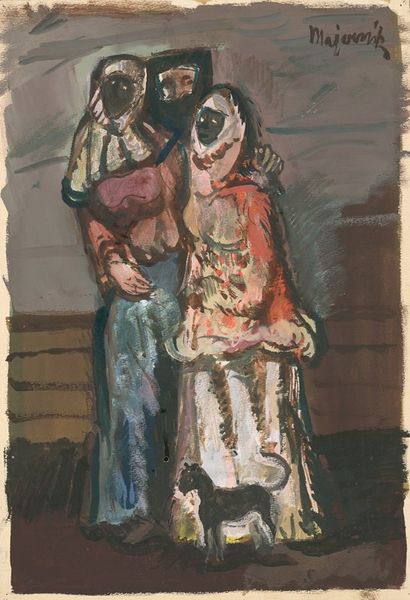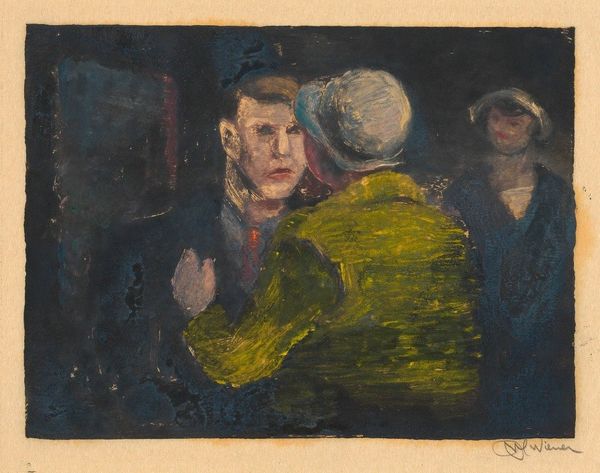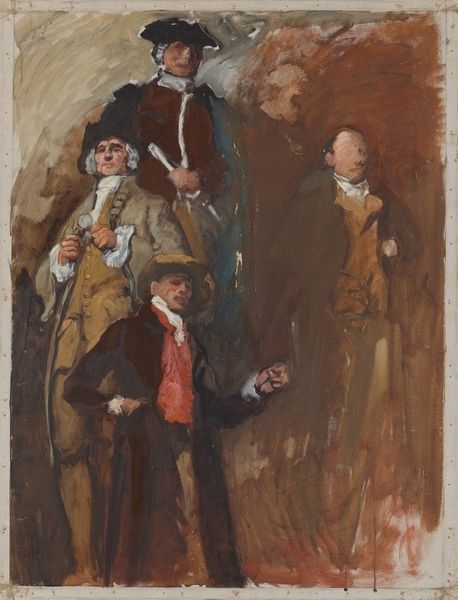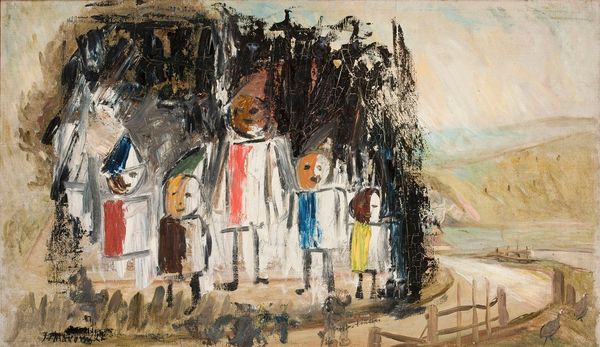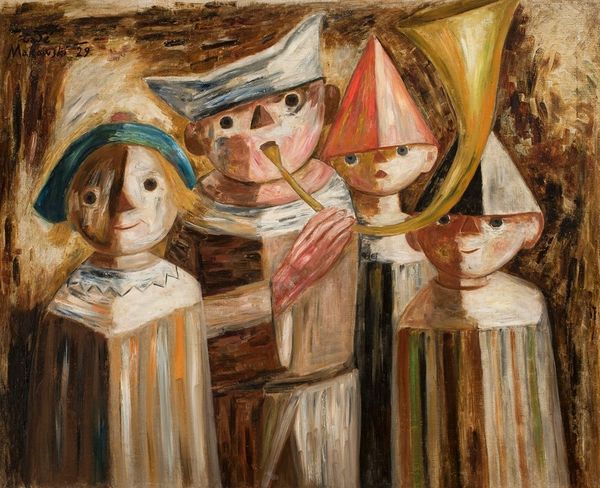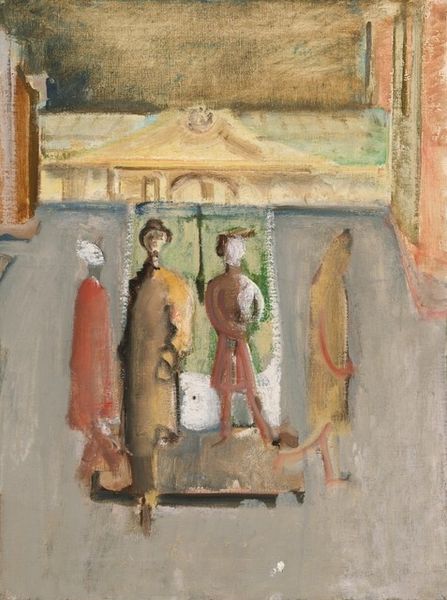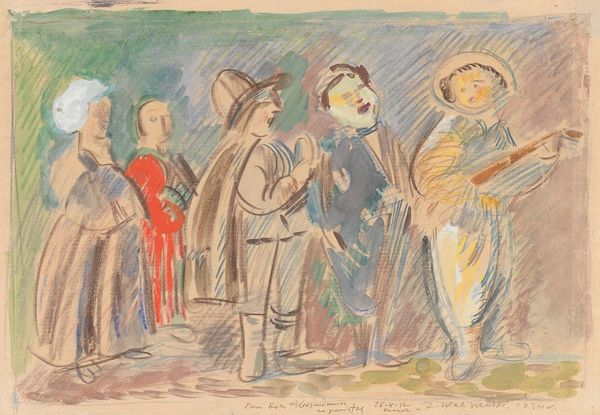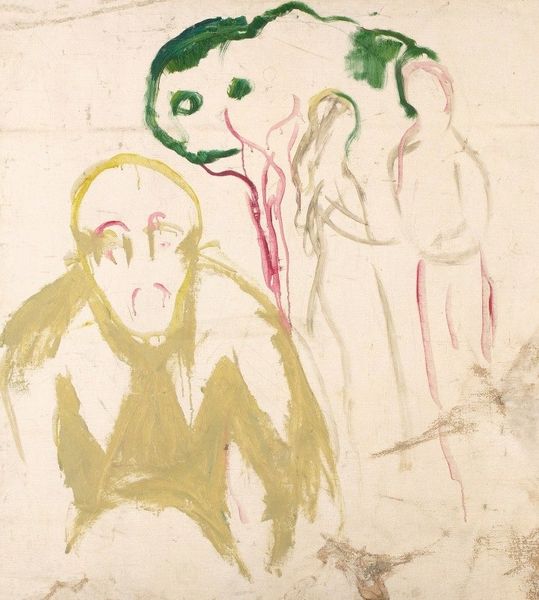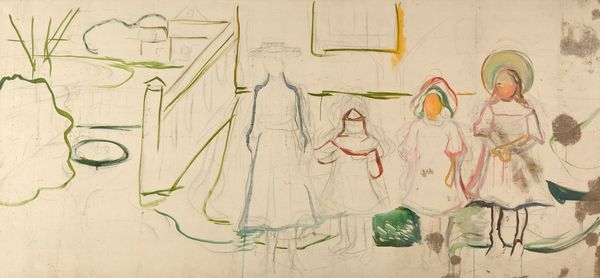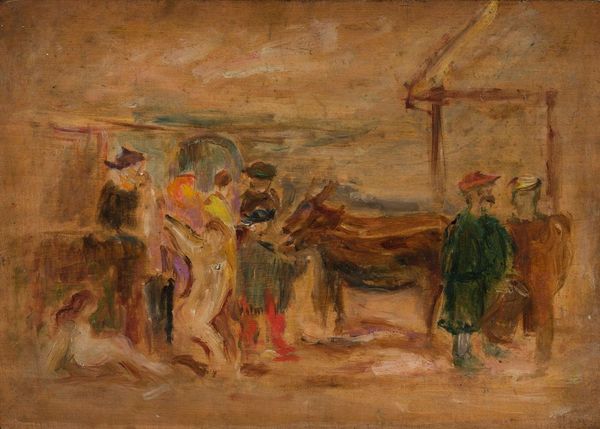
#
abstract painting
#
possibly oil pastel
#
abstract
#
handmade artwork painting
#
oil painting
#
acrylic on canvas
#
underpainting
#
painting painterly
#
watercolour bleed
#
watercolour illustration
#
watercolor
Copyright: Public Domain: Artvee
Curator: Tadeusz Makowski's "Five Children," created in 1925, presents us with a compelling look at childhood through an abstract lens. The painting technique looks like it might include both oils and watercolors to evoke a certain expressive power. Editor: It strikes me immediately as melancholic, even a little eerie. The children are huddled together, almost as if they're seeking comfort from something unseen, perhaps oppressive, as their indistinct features makes it hard to read individual affect. Curator: Makowski spent much of his artistic career in France, drawn to its burgeoning artistic scene and its openness to various experiments. However, he chose children as the core of his artistic production. He exhibited regularly and lived in various locations from Brittany, to Italy, to Switzerland, a background certainly reflective of his aesthetic concerns. Editor: Given the historical context of post-World War I Europe, I wonder if this huddled posture, combined with their anonymized features, speaks to a sense of collective vulnerability and even perhaps a loss of innocence? Curator: That's a insightful point to make. Certainly the socio-political context deeply influenced artistic production, and it is difficult to remove any image, but especially one as rife with vulnerability as this, from historical trauma. Note, as well, Makowski's consistent interest in folk art; how do those simplified shapes function both formally and as a political statement? Editor: Absolutely. The use of folk motifs can be read as an embrace of working-class identities during a period of intense social and economic upheaval. It challenges the traditional canon. It creates another entry point that makes this an enduring piece. The layers of symbolism really invite reflection about how society treats its most vulnerable members. Curator: Yes, thinking about that in connection with the medium itself makes this artwork even more relevant: how does abstract style and choice of such affordable materials democratize it further? Editor: Looking closely, one gets the sense that this art pushes forward important conversations of our society and does so with purpose and intentionality. Curator: I find myself reconsidering what constitutes visibility. The apparent obscuring, rather than reducing those pictured, perhaps amplified my ability to relate.
Comments
No comments
Be the first to comment and join the conversation on the ultimate creative platform.

